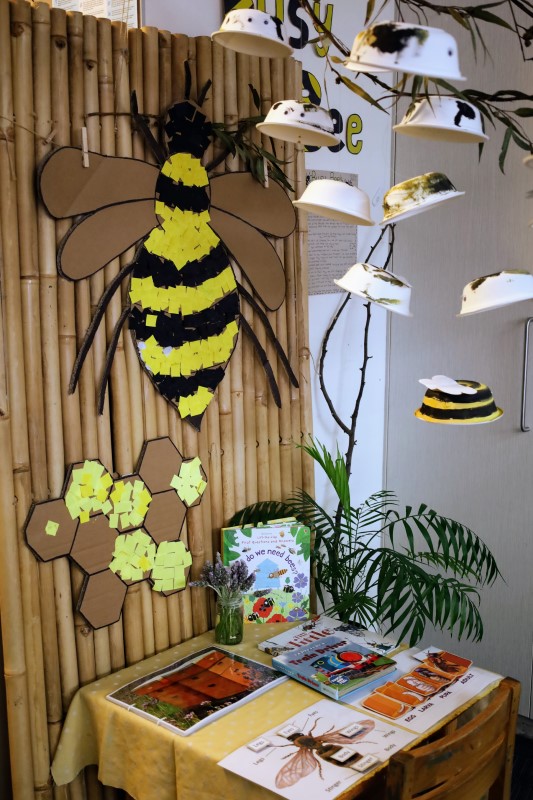Early Childhood Educator Hilda Hirmiz knew nothing about bees earlier this year, except that she was allergic to them. Lead by the curiosity and wonder of children, Hilda has become something of an expert.
“It started with a little boy in my class looking at what was growing in the garden bed,” Hilda explains. “He noticed one of the flowers had broken off and suggested we replant it so the bees would have something to eat. When we looked for the bees, however, we couldn’t find any.”
This curiosity sparked an entire class project on the world of bees, encompassing aspects of science, art, literacy and play.
“It’s been fascinating,” Hilda says. “We’ve learnt so much about bees and how they hibernate during winter, preparing for their busy spring and summer.
“We learnt about their life cycle and how their hive works, the queen and worker bees, and how they produce the honey that we put on our toast.”
A corner of Hilda’s classroom has been decorated with cardboard bees, a beehive and honeycomb, all created by the children, along with sprigs of lavender from the garden and books about bees.
“We’ve just started to spot a couple of bees in the garden now,” Hilda says. “So the children have been tracking them to see where they go.”
As an early childhood educator, Hilda says it’s important to be open to learning new things and for each day to take unexpected turns. “Children are naturally curious; they want to explore,” she says. “This unlocks learning for them and builds confidence and creativity. And it sparks more curiosity.”
In this case, the children’s fascination with bees has led them to discover snails in the garden, which has inspired a whole new project. Hilda is more than ready to take a learning journey down the snail trail: “I’m just hoping they don’t spot a spider in the garden next!”


